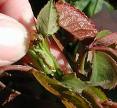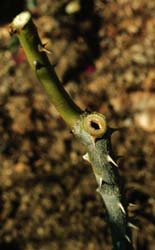Roses are one of the most popular and common types of flowers in the world. There are many different varieties of rose bushes and they produce flowers in just about every color imaginable, as well as different shapes, sizes and scents. Plant breeding has resulted in the development of rose bushes that are disease resistant as well as winter tolerant. Roses are split up into classes that have similar characteristics. Within these classes are specific rose bush varieties
Read more: Different Types of Rose Bushes | eHow.com http://www.ehow.com/list_6574682_different-types-rose-bushes.html#ixzz2RgJTUbNC
About Rose Bushes
A rose is a flowering shrub of the genus Rosa, and the flower of this shrub. There are more than a hundred species of wild roses, all from the northern hemisphere and mostly from temperate regions. The species form a group of generally prickly shrubs or climbers, and sometimes trailing plants, reaching 2–5 metres tall, rarely reaching as high as 20 metres by climbing over other plants.
The name originates from Latin rosa, borrowed through Oscan from colonial Greek in southern Italy: rhodon (Aeolic form: wrodon), from Aramaic wurrd?, from Assyrian wurtinnu, from Old Iranian *warda (cf. Armenian vard, Avestan warda, Sogdian ward, Parthian wâr).
Rose hips are sometimes eaten, mainly for their vitamin C content. They are usually pressed and filtered to make rose-hip syrup, as the fine hairs surrounding the seeds are unpleasant to eat (resembling itching powder). They can also be used to make herbal tea, jam, jelly and marmalade. A rose that has aged or gone rotten may not be particularly fragrant, but the rose’s basic chemistry prevents it from producing a pungent odor of any kind. Notably, when balled and mashed together the fragrance of the rose is enhanced. The fragrance of particularly large balls of mashed roses is enhanced even further.
Rose shrubs are often used by homeowners and landscape architects for home security purposes. The sharp thorns of many rose species deter unauthorized persons from entering private properties, and may prevent break-ins if planted under windows and near drainpipes. The aesthetic characteristics of rose shrubs, in conjunction with their home security qualities, makes them a considerable alternative to artificial fences and walls.
This website, www.rose-bushes.com, is a tribute to roses and the rose bush. We’re always looking for more information about rose bushes, so if you’d like to help contribute photos of your roses, an article, or other information, please let us know.
Rose-bushes.com is listed in the
Dir Fly Web Directory.
How to Control Insects that Damage Rose Bushes
The name originates from Latin rosa, borrowed through Oscan from colonial Greek in southern Italy: rhodon (Aeolic form: wrodon), from Aramaic wurrd?, from Assyrian wurtinnu, from Old Iranian *warda (cf. Armenian vard, Avestan warda, Sogdian ward, Parthian wâr).
Rose hips are sometimes eaten, mainly for their vitamin C content. They are usually pressed and filtered to make rose-hip syrup, as the fine hairs surrounding the seeds are unpleasant to eat (resembling itching powder). They can also be used to make herbal tea, jam, jelly and marmalade. A rose that has aged or gone rotten may not be particularly fragrant, but the rose’s basic chemistry prevents it from producing a pungent odor of any kind. Notably, when balled and mashed together the fragrance of the rose is enhanced. The fragrance of particularly large balls of mashed roses is enhanced even further.
Rose shrubs are often used by homeowners and landscape architects for home security purposes. The sharp thorns of many rose species deter unauthorized persons from entering private properties, and may prevent break-ins if planted under windows and near drainpipes. The aesthetic characteristics of rose shrubs, in conjunction with their home security qualities, makes them a considerable alternative to artificial fences and walls.
This website, www.rose-bushes.com, is a tribute to roses and the rose bush. We’re always looking for more information about rose bushes, so if you’d like to help contribute photos of your roses, an article, or other information, please let us know.
Rose-bushes.com is listed in the
Dir Fly Web Directory.
How to Control Insects that Damage Rose Bushes

Rose bushes are susceptible to many damaging insects, including the rose midge larva, rose cane borer, stem girders, thrips, aphids, Japanese beetles, sawflies (or rose slug), mites, scale insects, caterpillars, and rose chafers, to name a few. There are several options for controlling these pests.

rose midge larva

Rose Cane Borer Damage to Rose
You may be able to prevent destructive insects in the first place with biological control, or insects that are natural enemies to the pests. You will need to find a distributor, either from the Internet or a local garden center. Follow the appropriate instructions for the timing of the release, how many to release, and how to store them if necessary.
Another approach is to use natural or synthetic chemicals. Both may be obtained at your local garden center or ordered on-line. It is important to follow the labels for any application, even those that are “organic” or “natural” because the ingredients are in a concentrated form and can still be toxic to people if improperly used. Keep in mind, the label is the law!
Interested in other types of bushes? You might want to take a look at holly bushes, our other website about bushes that we have at our home.
Did you know that adding a few lawn ornaments or fountain(s) to your outdoor decor is a pleasant way to customize your home and garden area of your home? Gazing Balls, statues, and bird baths are also tasteful additions, as well. We recently added a bird bath and a fountain to our rose garden in the back, and it really has added to the ambiance.
No comments:
Post a Comment